Written By: Rob Gabriele | Updated October 1, 2024
The Best & Worst States for Climate Change in the U.S.
- Coastal states like Florida and South Carolina are most at risk of the impacts of climate change.
- Extreme heat, drought, inland flooding, wildfires, and coastal flooding are some of the most devastating effects of climate change.
- The effects of climate change can cost homeowners thousands of dollars in damages.
The signs are clear — if humanity is unwilling or unable to significantly curb global warming in the next decade, the consequences for life on this planet will be dire. We could witness mass extinction events, dangerous sea level changes, more extreme temperatures, and increases in catastrophic weather events.
And this isn’t hypothetical; it’s already happening. In recent years, we saw record-breaking heat waves sweep across different parts of the world, bringing sweltering temperatures scientists say would have been impossible without the influence of climate change.
Despite near unanimous scientific consensus that the dramatic increase in global temperatures over the past century has been driven by human activity, limiting the causes of climate changes remains a contentious political issue — particularly here in the U.S.
According to a Pew Research Center study, 54 percent of American adults describe climate change as a major threat. This figure is down slightly from 2020 but remains higher than it was in the early 2010s.
This notion, though, is starkly contrasted down party lines. About 78 percent of Democrats now describe climate change as a major threat to the country’s well-being, while just 23 percent of Republicans agree.
But we’ve already seen the widespread effects of climate change right here in the U.S. — wildfires, stronger hurricanes and more frequent flooding, just to name a few. In such a large and environmentally diverse landmass as the United States, the effects of climate change vary considerably across the country, with some regions of the country likely to experience far worse impacts from global warming than others.
To quantify which states are likely to have it the best (and worst) over the next several decades, we examined data published by Climate Central, a group of scientists and researchers focused on documenting the effects of climate change.
Our research indicated that while every state would be impacted by rising temperatures, there are a handful of unlucky states that by virtue of their geographic placement will be especially threatened by climate change. To see the full methodology used to create our Climate Change Risk Index, jump to the bottom of the page. We have excluded Alaska and Hawaii from the analysis for lack of comparable data.
Climate Change Risk Index
The impacts of climate change are wide-sweeping and complex, but one way to understand it is by looking at five major categories: extreme heat, drought, wildfires, coastal flooding, and inland flooding. Each of these categories, of course, impact each other, and has cascading effects. For example, extreme heat increases the risk of wildfires while also impacting agricultural yield and stress of a community’s electrical grid.
To calculate our Climate Change Risk Index, we compared data to determine things like how many people are at risk of dangerously high temperatures, wildfires or flooding and how climate change will extend periods like mosquito season or high wildfire risk days. Each state was ranked in each category from best to worst, and those figures were added together to create a total in which higher numbers equate to greater risk from climate change.
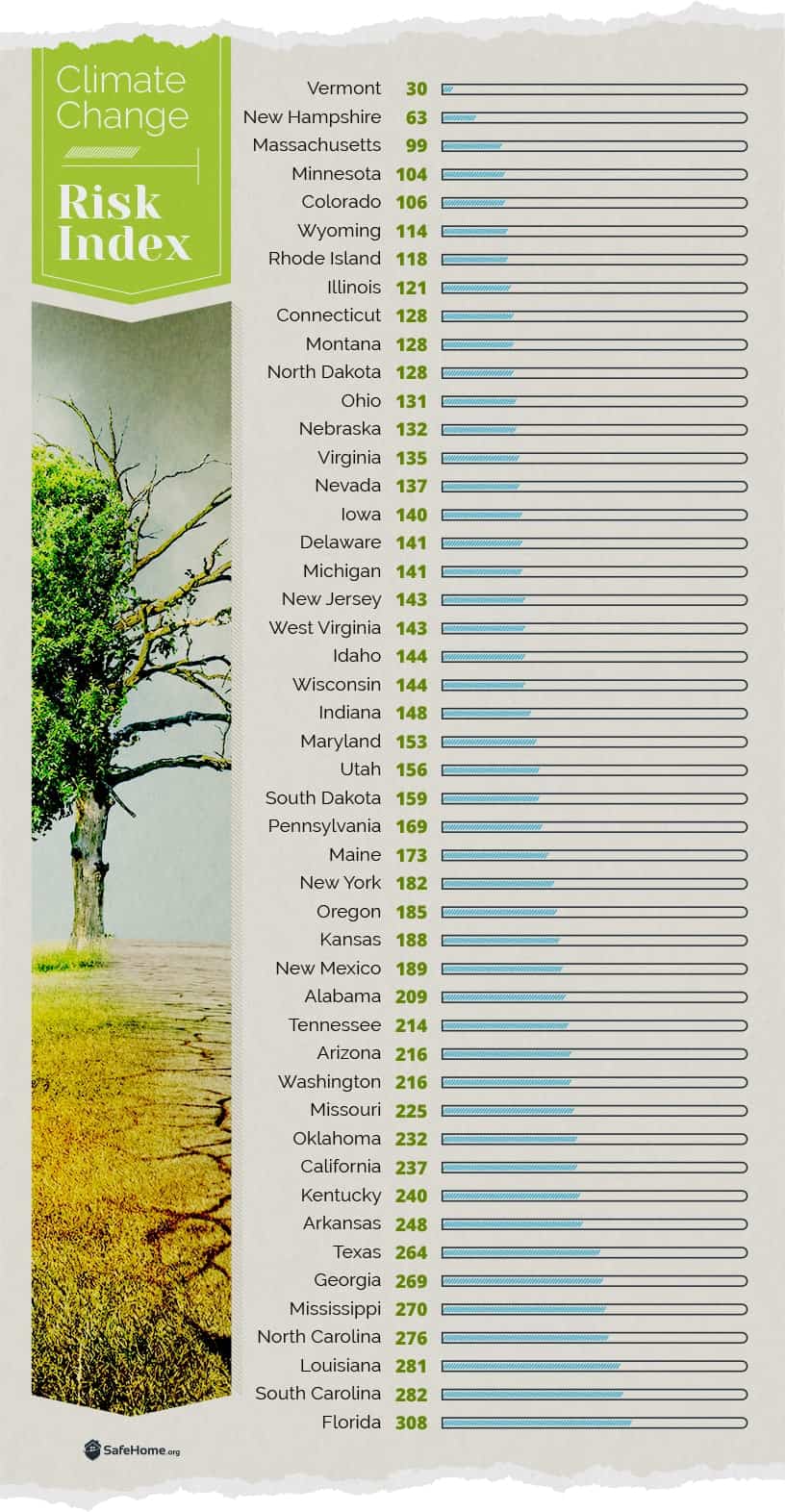
Nine of the 10 states that are likely to experience the worst impacts of climate change are in the South, and most of those are coastal states. California, a West Coast state, takes the No. 10 spot. Only two of the Southern states in the top 10, Arkansas and Kentucky, are landlocked.
On the other end of the spectrum, the Northeast dominates the list of states where climate change impact is likely to be less severe, including No. 1 Vermont, with neighboring New Hampshire in a distant second place. The Northeast is home to the only three states with Climate Change Risk Index scores lower than 100 (Vermont, New Hampshire, and Massachusetts).
Regionally, the highest average score is in the South, where the average state has a Climate Change Risk Index score of 229, far higher than the overall U.S. average of about 174. In fact, no other region has an average score over that, though the West is close.
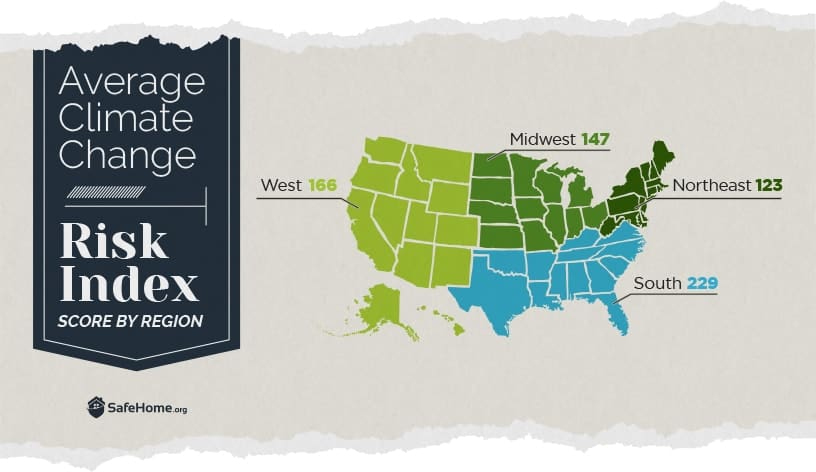
As we mentioned, all 48 states we analyzed are expected to see an increase in extreme heat, which could include an increase in the number of very hot days, an extension of the mosquito season in the state, or a higher number of poor air quality days, among other impacts of extreme heat. Vermont is the only state where extreme heat is the only expected climate change impact, and a few states will be impacted by all five issues — heat, drought, wildfires, coastal flooding, and inland flooding.
Did You Know? Medical alert systems can be a life saving device for seniors during times of extreme heat. If you or a loved one are considering a medical alert system as a means to protect against very hot weather, you can read our guide on how to choose a medical alert system.
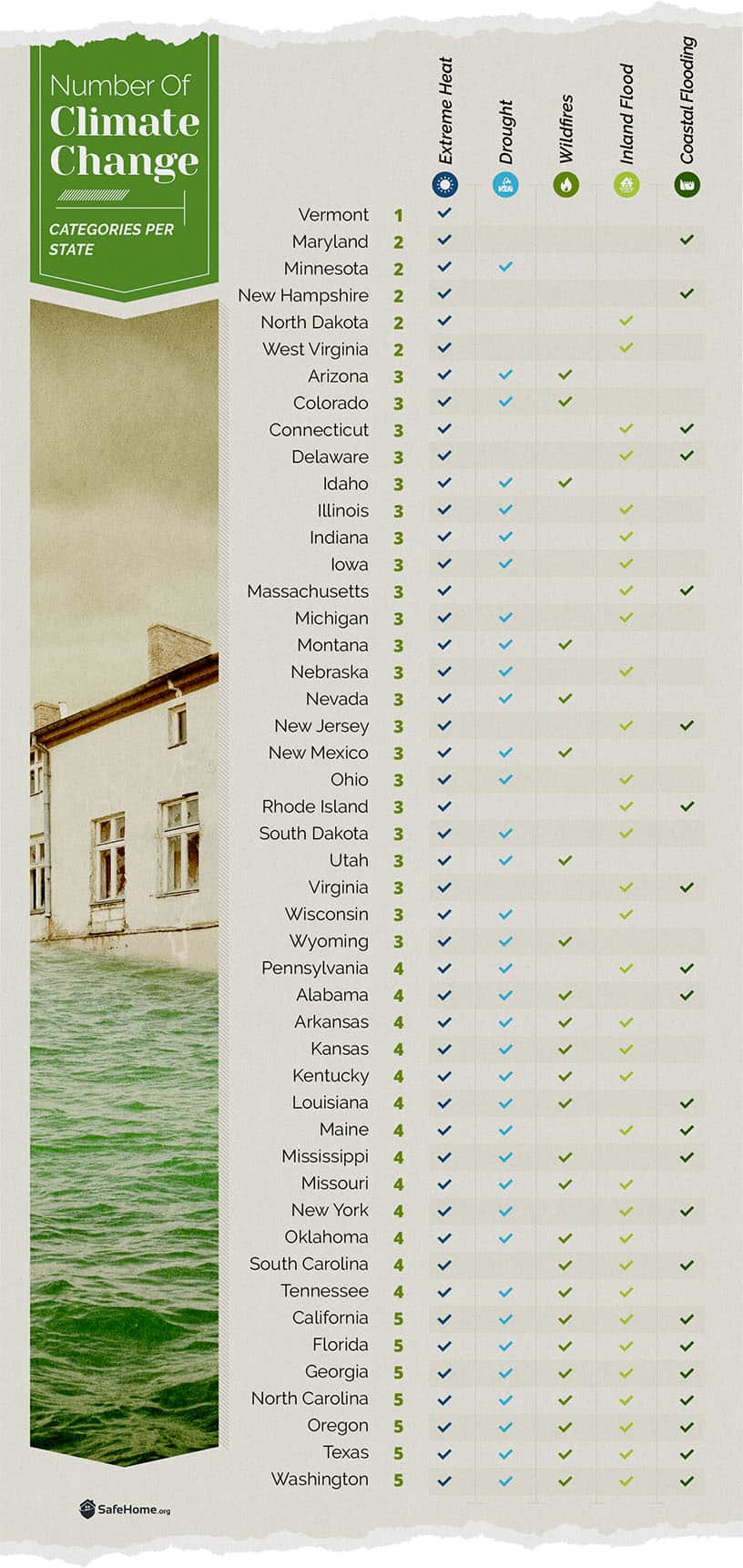
California, Florida, Georgia, North Carolina, Oregon, Texas and Washington are expected to experience all five major climate change categories over the next few decades. Not surprisingly, all of those states also have Climate Change Risk Index scores higher than the overall U.S. average.
Extreme heat will impact every state, with drought the second-most common climate change impact — 3 in 4 states are expected to see their drought risk rise. Coastal flooding is the least common climate change impact among all five, but only two states among those with the 10 highest risk scores have no coastal flooding risk.
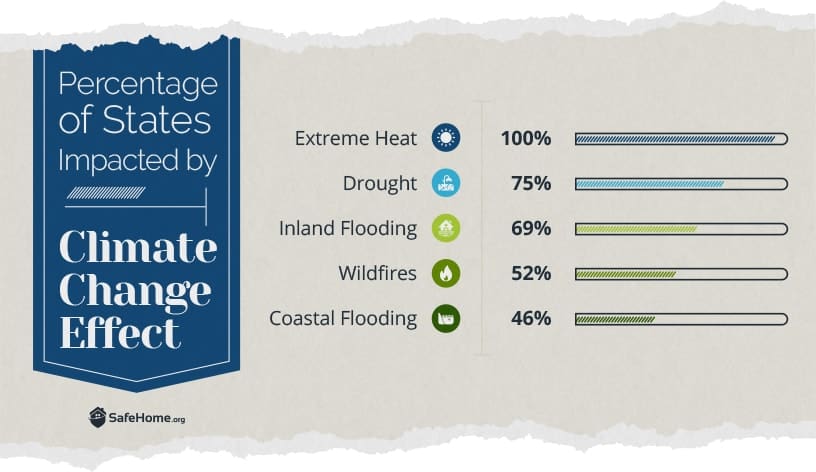
Extreme Heat
Because extreme heat is the most common climate change impact, affecting all states in the coming years, we included the highest number of factors related to extreme heat in our index. Our analysis in this area included the percentage of people vulnerable to extreme heat, the increase in mosquito season days between the 1980s and today and the projected number of dangerously hot days (days where the heat index is higher than 105 degrees) by 2050.
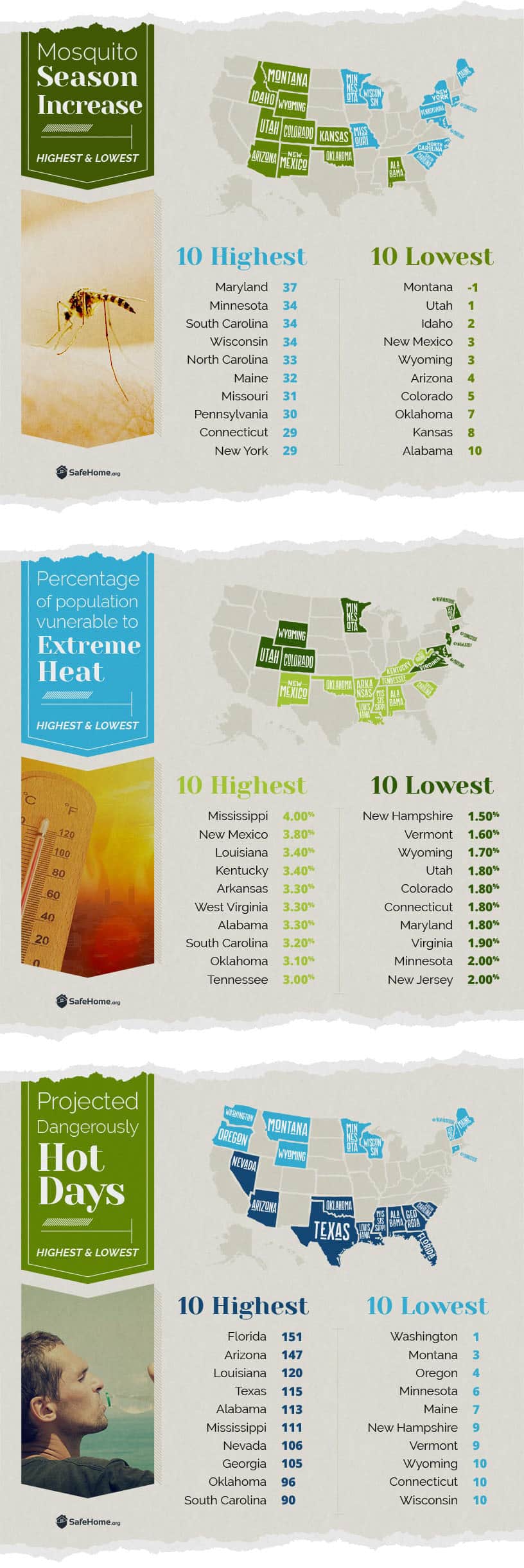
Drought
Elevated drought risk is the second most common projected climate change impact, expected to impact 75% of the states we analyzed. Because available data on drought risk is a bit sparse, and several states aren’t likely to see their drought risk rise tremendously, we included only one factor in ranking states for drought risk — the projected percentage increase in the severity of widespread summer drought. In several states, this risk is expected to explode through 2050, while every state impacted by drought is expected to see some increase in this rate.
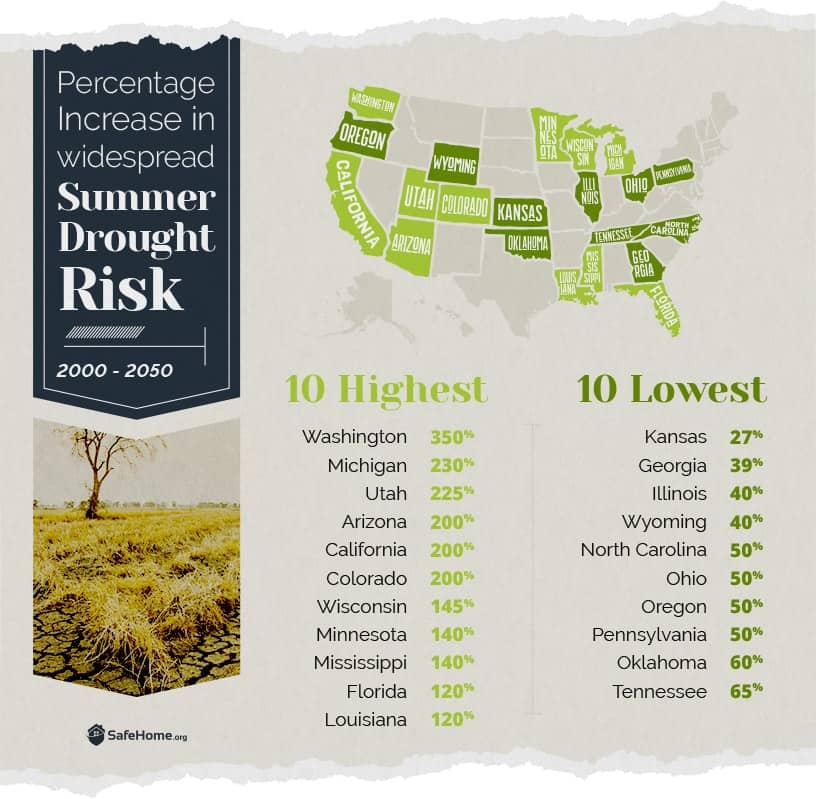
Inland Flooding
Inland flooding is projected to impact 33 of the 48 states we examined, making it the third most common climate change impact. In this area, we included one factor to rank how much inland flooding is expected to affect the state — the percentage of a state’s population at high risk of inland flooding, meaning those living in the federal government-designated 100-year floodplain.
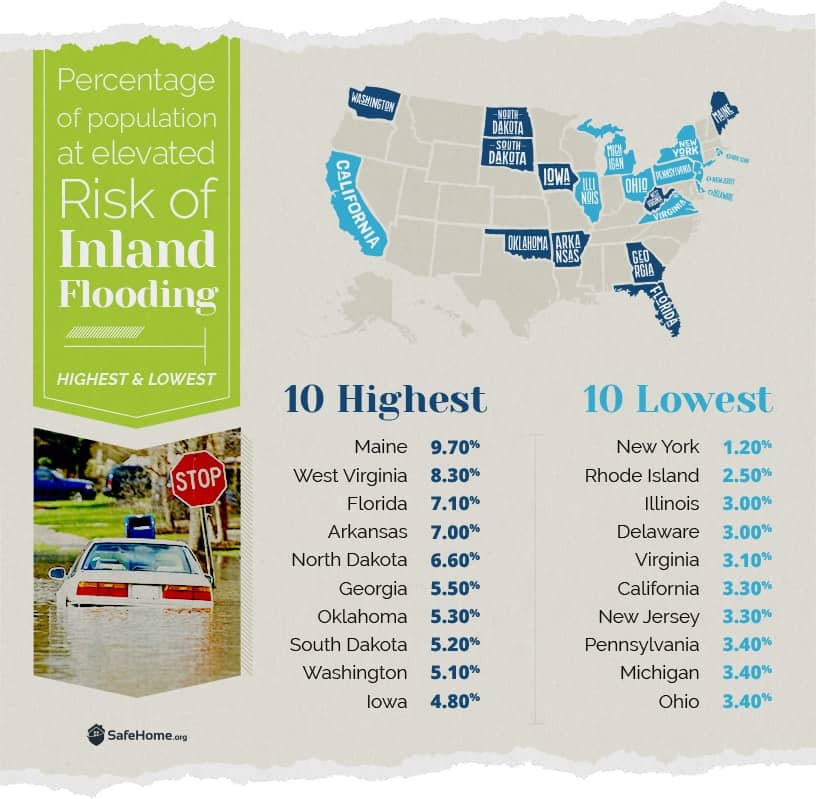
Wildfires
Just over half of the 48 states that were part of our analysis are expected to see impacts of climate change related to wildfires. In this area, we included two factors as part of our ranking — the increase in days with high wildfire potential through 2050 and the percentage of the population who currently live in an area with an elevated wildfire risk.
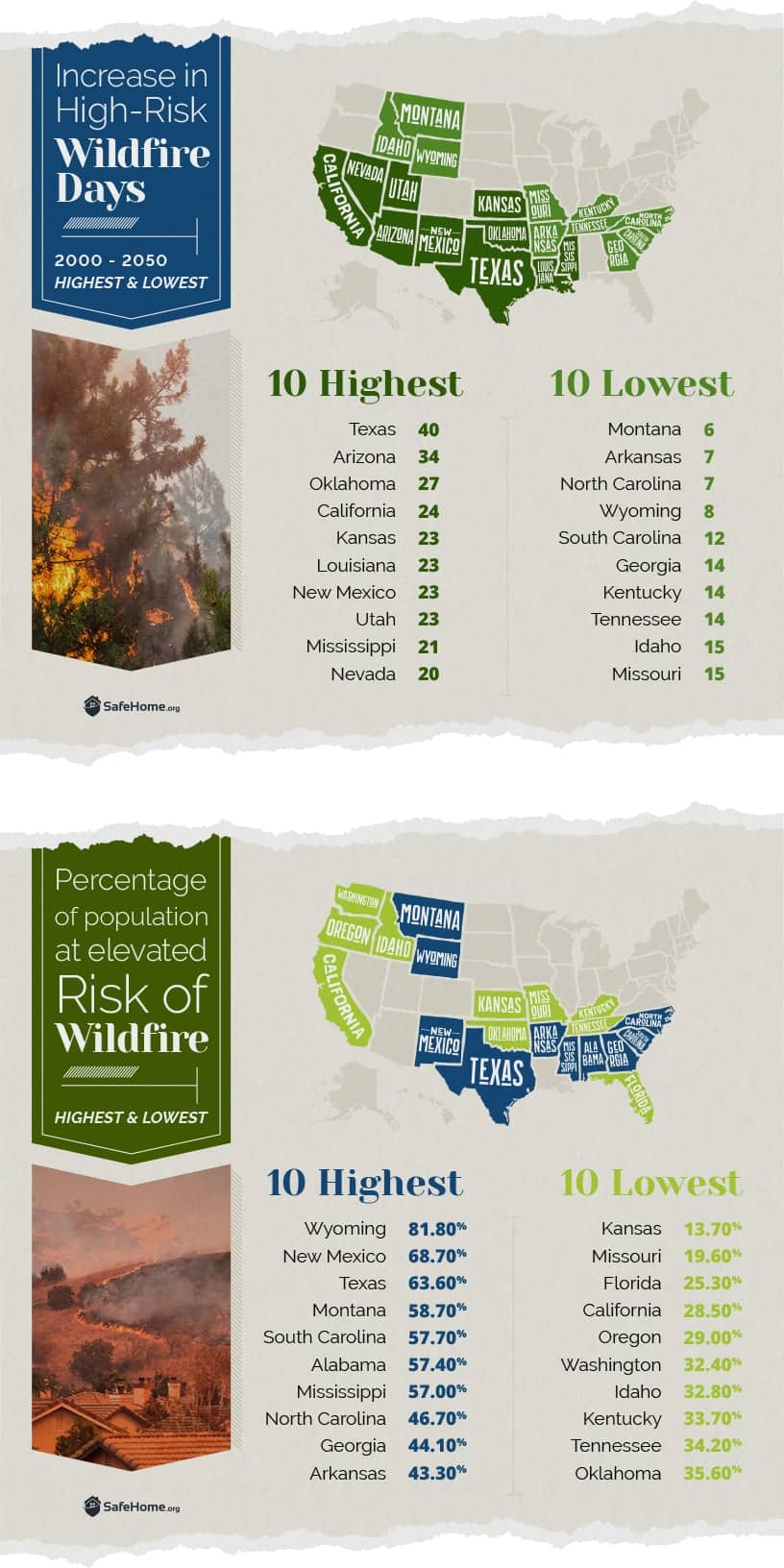
Coastal Flooding
Twenty-two states are expected to see serious impacts of coastal flooding related to climate change. In two states, upwards of 15% of the population is at an elevated risk of coastal flooding. This is the only factor we considered when examining coastal flooding risk, though many other factors exist; at-risk population is one of the only factors for which apples-to-apples comparisons can be made. The percentage of people at risk of coastal flooding represents those living in the 100-year coastal floodplain.
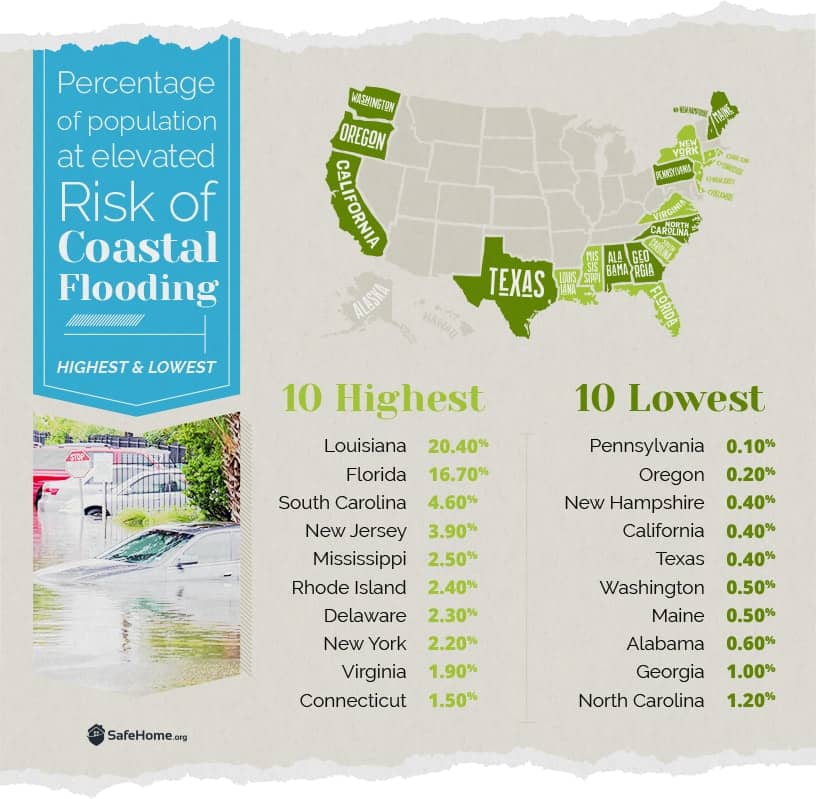
What About Your State?
While pretty much everyone has been experiencing rising temperatures, as we’ve seen, the impacts of climate change on a state-by-state basis are broad and diverse. Take a look at what’s expected to happen in your state:
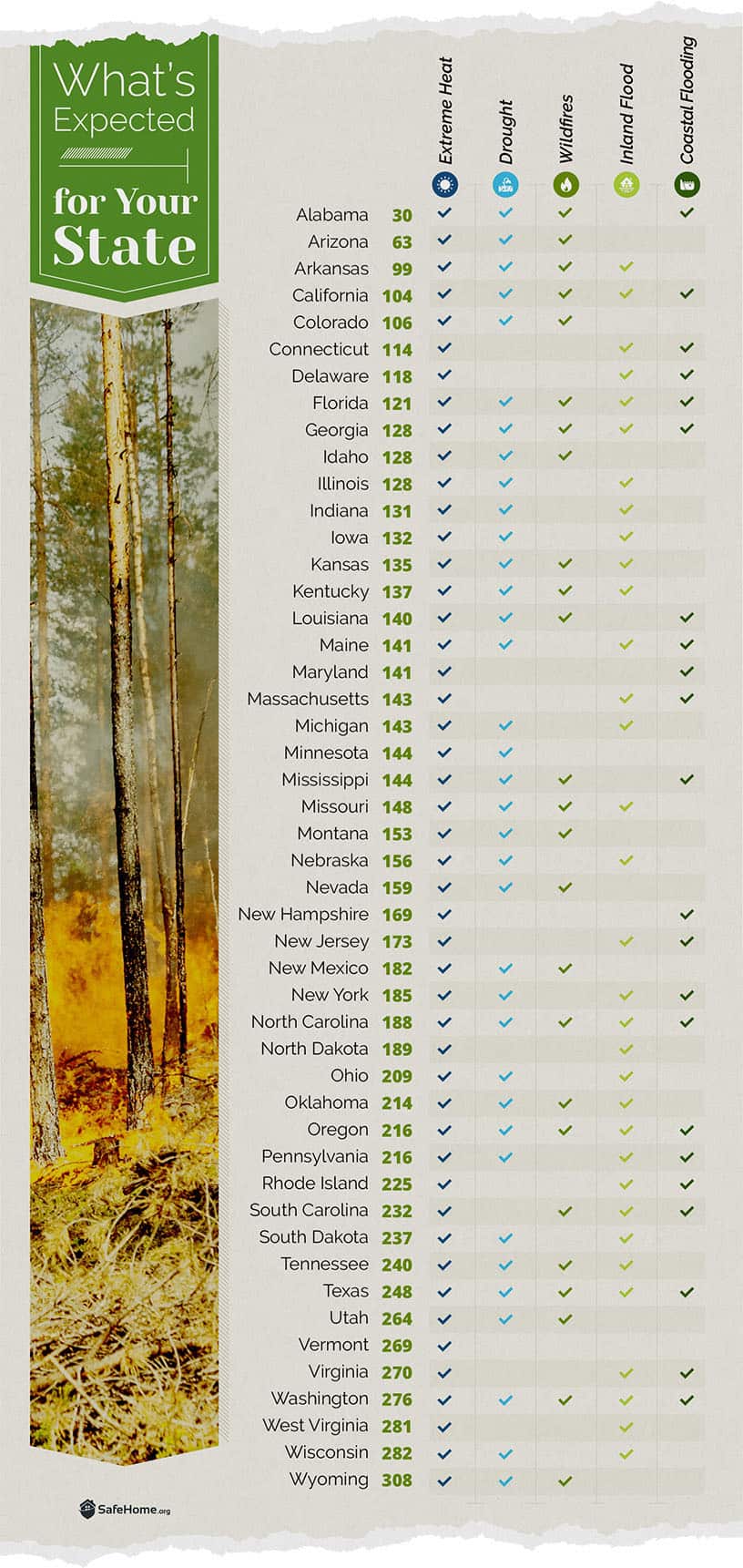


Conclusion
While the specific impacts of climate change will vary from state to state, the reality is no American will be able to completely escape the real and everyday effects of human-induced climate change.
Methodology
All of the data used in our analysis came from the excellent work of Climate Central and a site it maintains, States at Risk, which is a clearinghouse of data and analysis related to the impacts of climate change on the states. We excluded Alaska and Hawaii from our analysis because not enough data was available for either one to draw fair comparisons.
The site lists dozens of impacts for states and, often, multiple cities within the states, but the factors we included in our Climate Change Risk Index were:
- Increased mosquito season days, 1980s to today
- Dangerously hot days by 2050 (days with heat index of at least 105 degrees) in state or largest city
- Percentage of people vulnerable to extreme heat
- Increase in severity of widespread summer drought, 2000-2050
- Percentage of people currently affected by inland flooding (percentage living in 100-year floodplain)
- Increase in days with high wildfire potential, 2000-2050
- Percentage of population at elevated wildfire risk
- Percentage of people currently affected by coastal flooding (percentage living in 100-year coastal floodplain)
The data for each state was ranked from best to worst, and each state’s rank in all the categories were added together to create the overall ranking in which lower scores equate to lower risk from climate change.
Fair Use Statement
The information and images on this page are free for noncommercial uses. Please reference this page with a link to the URL at the top if you choose to share it.





